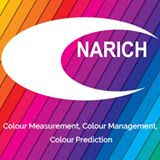More and More Corporates are realizing the power of colour and images in the Global Economy. A picture is says a thousand words, and in these time drought days, in a second. A well known Corporate Logo instantly conveys a message that pages of text can not match.
Research reveals the power of Branding even to the extent that say a leading Automotive Brand will be more trusted on a garment than a non branded garment, even if the brand has almost no history in garment sales.
A growing problem is the proliferation of Iconography and the trade mark registration of even the smallest of company's is necessary. If your trade mark is going to be displayed on multiple substrates and media, you soon run into a couple of colour control issues. From a trade mark point of view, one tip is to register your logo in black and white. It firstly protects the shape or design, and secondly you can specify any or many colours at a later stage without the fear of being rushed into a bad specification.
Colour is a sense and is not a property of the object, but the outcome of the context of viewing the object under known conditions. To provide a reproducible (In the real world) colour it must be described in an acceptable International Norm Colour Space like for instance CIE L*a*b.
If your Logo is going to be displayed in print, on plastic, on metal, card board, TV advertisements and back lit screens, a unique specification is required for each context.There also has to be an agreed tolerance of colour difference with your suppliers which ensures that if your branded truck is seen parked next to a bill board advertising your products, the viewer's sense of the colour is always the same. Confused colour messages hugely dilute the VALUE of the brand which is considered to be your most valuable intangible asset.
Typically, multiple suppliers will use multiple methods to create their customers colour work. From rough eye approved methods to sophisticated Spectrophotometer quality assurance will result in a varying palette of shades across the range. The suppliers are also potentially separated by large distances making Precise Colour Communication difficult.
Fortunately today sophisticated software is available to manage both the specification and control of colour, as well as the issue of multiple suppliers. This is available here and now.


Fascinating!
ReplyDelete